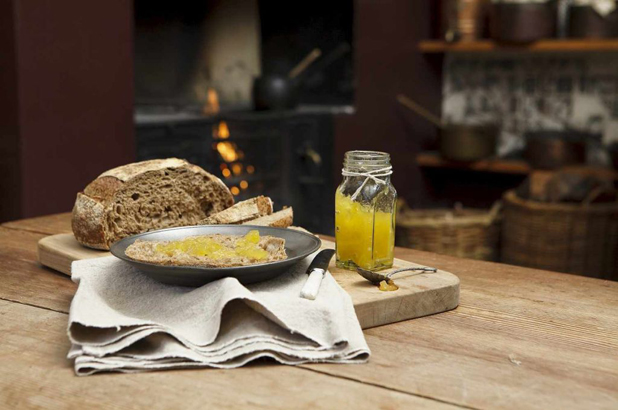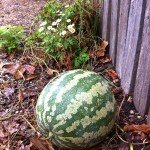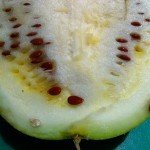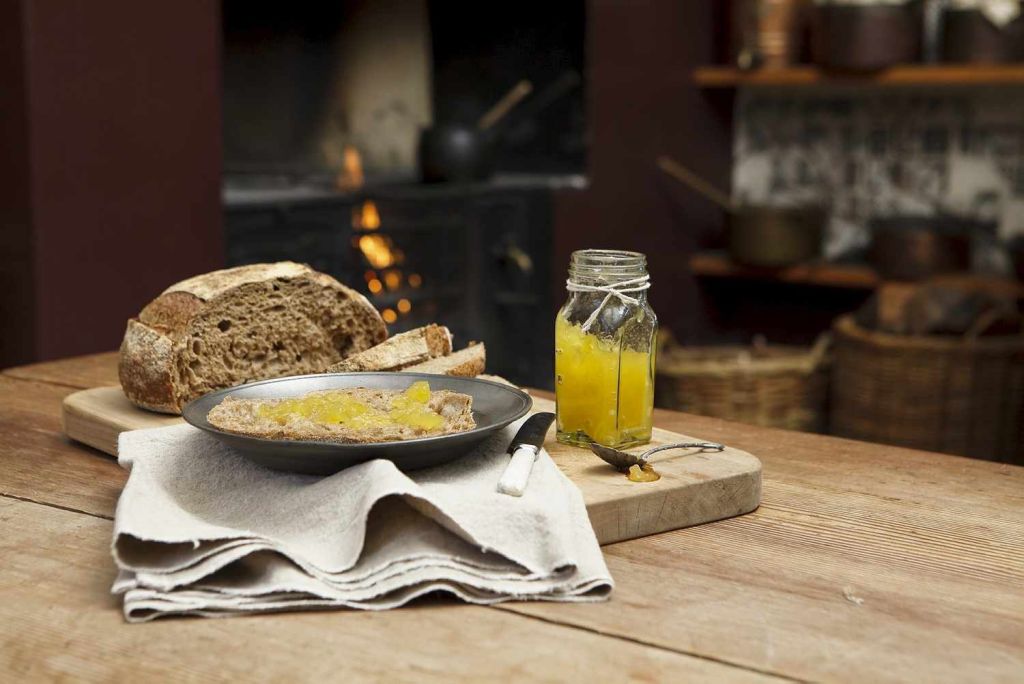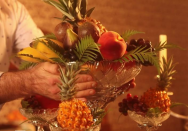What happens when you partner the ‘King of Fruits’ with a ‘rogue melon’? A delicious marriage of flavour and texture which also craftily extends the expensive, exotic pineapple with the more easily sourced jam melon.
A rogue melon
Just when you were thinking this looks like a succulent watermelon, split it open and it is sadly lacklustre in colour, has a spongy texture and is almost devoid of fragrance or flavour ![]() . But in testament to the ‘waste-not-want-not’ philosophy of the Victorian period it served a very useful purpose, earning its common name of ‘jam melon’.
. But in testament to the ‘waste-not-want-not’ philosophy of the Victorian period it served a very useful purpose, earning its common name of ‘jam melon’.
A useful rogue
This particular melon self-seeded outside the animal enclosure at Vaucluse House – probably because our pet ducks, chooks and goats LOVE melons! But it is a surprisingly useful kitchen garden plant, as it cooks amazingly well, maintaining a plumpness and pleasantly chewy texture. It is for this reason it was readily used in jam-making, often as a filler or extender. It absorbs the colour and flavour of any other fruits it has been cooked with making it ideal to use with expensive or hard-to-come-by fruits such as pineapples, or to balance intense flavours such as lemon or ginger.
Citrullus lanatus var. citroides, better known as Red Seeded Citron, originated in South America and, like many ‘New World’ plants, flourished in the colony’s temperate climes. Sometimes they’re called ‘paddy’ melons, and they grow almost wild in paddocks in some rural regions.

Handwritten pineapple and melon jam recipe, Rouse Hill House & Farm Collection. Photo Scott Hill © HHT
You don’t find melon jam recipes in the English texts such as Beeton or Acton for example, as melons were not found in England, but melon jam recipes abound in early Australian cookbooks. Jam melons aren’t commonly found in shops now, but you can substitute honeydew melon if you want to try out the traditional recipes. The hand-scrawled note (it would barely qualify as a recipe) pictured above was wedged into the melon jam pages in one of the family cookbooks at Rouse Hill House, another of HHT’s historic houses.
RELATED: See how the pineapple is also used to decorate a colonial table…
